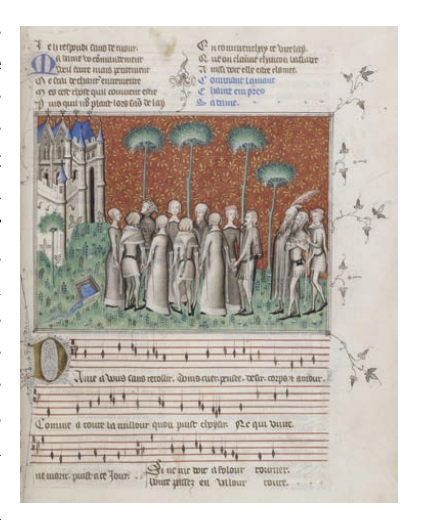2.2: Music in the Middle Ages- An Overview
- Page ID
- 54320
Not surprisingly, given their importance during the Middle Ages, both the Catholic Church and the network of aristocratic courts left a significant mark on music of the time. Much of the music from that era that was written down in notation and still exists comes from Christian worship or court entertainment. Churches and courts employed scribes and artists to write down their music in beautifully illuminated manuscripts such as this one that features Guillaume Machaut’s “Dame, a vous sans retoller,” discussed later. Churchmen such as the monk Guido of Arezzo devised musical systems such as “solfège” still used today.

As we study a few compositions from the Middle Ages, we will see the following musical developments at play: (1) the development of musical texture from monophony to polyphony, and (2) the shift from music whose rhythm is hinted at by its words, to music that has what we refer to today as meter. Although we know that instrumental music existed in the Middle Ages, most of the music that has survived is vocal.


